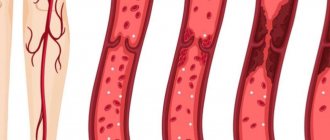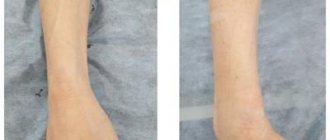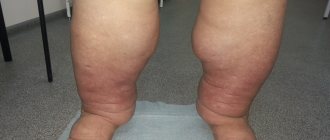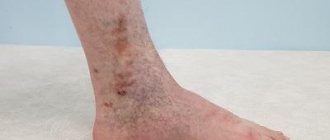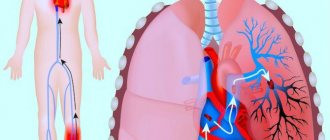Lymphostasis is currently considered as an independent disease, which has its own code in the ICD classification and is characterized by pathological accumulation of lymph in the intercellular space, which occurs due to a violation of the natural outflow of lymph and is accompanied by an increase in the volume of the affected organ.
There are currently many known reasons for the development of lymphostasis, and one of them is surgical intervention for cancer, including removal of lymph nodes regional to the tumor. This article will consider a special case of lymphostasis - lymphostasis of the upper limb after mastectomy.
Causes of development of lymphostasis of the upper limb
The root cause of the development of edema of the upper limb after a mastectomy, as well as radical resection of the mammary gland, is the removal of axillary lymph nodes, which are regional to the mammary gland. Thus, the natural outflow of lymph is disrupted, and its restoration may be impaired due to the formation of scar connective tissue and its subsequent compression of both lymphatic and blood vessels in the operated area.
Other components of complex treatment for breast cancer (radiation therapy, chemotherapy) carried out after surgery can also provoke the development of lymphostasis or intensify existing edema. Other factors that can provoke the development of lymphostasis may be infectious processes, increased physical activity on the upper limb on the operated side, and obesity.
Literature
- Yudin V.A.. Savkin I.D. Treatment of lymphedema of the extremities [Electronic resource] // Journal “Russian Medical and Biological Bulletin named after. Academician I.P. Pavlova, 2015.
- Larinsky N., Byalovsky Yu., Ivanov A. Magnetic therapy with a running field in the complex treatment of postmastectomy lymphedema of the upper extremities [Electronic resource] // Doctor Magazine, 2021.
- Yarema I.V., Aliev M.M., Sipratov V.I. Chronic lymphovenous insufficiency of the lower extremities and lymphoscintigraphy [Electronic resource] // Medical scientific and practical portal “Attending Doctor”, 1999.
Symptoms of lymphostasis
Lymphostasis can develop both in the early stages after surgical treatment and in the late stages. The main symptom that patients pay attention to is an increase in the volume of the upper limb on the operated side compared to the opposite. Another important symptom is the limitation of the amplitude of both active and passive movements of the arm in the shoulder joint. In addition, symptoms of the disease may occur, such as decreased muscle strength, sensory disturbances, pain, a feeling of tightness, and heaviness. In the case of progression of lymphostasis, disturbances in the trophism of the skin, the appearance of trophic changes on the skin (up to ulceration), lymphorrhea (the release of lymph through the skin), hyperkeratosis, and the addition of secondary infections (for example, streptococcus, resulting in the development of erysipelas) are possible.
Manifestations
There are quite a lot of symptoms of pathology. The first of these is significant swelling. Due to this:
- The limb becomes unnaturally shaped;
- The skin becomes stretched;
- The joints lose their former mobility;
- The skin of the extremities becomes rough and darkens, it resembles the peel of an orange.
The stages of pathology are assessed by the severity of its symptoms.
- Stage one - swelling appears in the afternoon and is the result, for example, of prolonged sitting or a large volume of fluid consumed;
- Stage two – swelling appears more often, severe pain is felt, and there is a feeling of heaviness in the legs. If you press on the skin, which becomes rough and loses elasticity, a dent will appear for a while;
- The third stage - immobilization of the joints occurs, the shape of the limb changes, and signs of trophic ulcers appear.
Diagnostics
As with any pathological condition, the diagnosis of lymphostasis begins with collecting an anamnesis, in which special attention is paid to the volume of surgical intervention performed, the timing of its implementation, as well as the timing and volume of radiation therapy, if it was performed. A physical examination is performed, including:
- measuring the circumference of the edematous limb at the site of maximum edema;
- measuring the circumference of both limbs in three places (at a distance of 10 cm above the lateral epicondyle of the humerus, 10 cm below the lateral epicondyle of the humerus, in the central part of the metacarpus) for comparative purposes;
- measuring the range of motion in the shoulder joint;
- assessment of muscle strength using a dynamometer.
The following instrumental diagnostic methods are used:
- ultrasound diagnostics of blood vessels of the upper limb;
- lymphoscintigraphy with technetium, used to directly assess the condition of the lymphatic vessels;
- A more informative method compared to the previous one is fluorescent lymphography using indocyanine green as a contrast agent.
In addition, the capabilities of magnetic resonance imaging in the diagnosis of lymphostasis and damage to surrounding soft tissue structures are being explored.
Benefits of pressotherapy
Pressotherapy is a hardware lymphatic drainage massage that improves metabolic processes in a selected area of the body. A very effective way to combat lymphostasis.
Let's consider the benefits of pressotherapy:
- One session replaces 20 manual massages.
- Has a deep effect.
- Improves blood and lymph flow.
- Promotes the removal of intercellular fluid.
- It's painless.
- It has a pleasant relaxing effect.
- It also helps remove cellulite and tighten the skin.
Stages of lymphostasis
There are four stages of the process depending on how pronounced lymphostasis and changes in the skin and soft tissues of the upper limb are:
- Zero (subclinical). The swelling is mild and may spontaneously appear and disappear. There is practically no difference in the circumference of the upper limbs.
- First. Lymphostasis affects the hand and forearm, the difference in the circumference of the upper limbs is less than 4 cm. The skin pattern is smoothed out.
- Second. Lymphostasis affects the entire upper limb, the difference in the circumference of the healthy and diseased arm is from 4 to 6 cm. At this stage, trophic changes in the skin are observed in the form of dryness and changes in skin color, reduction in hair, and the addition of a secondary infection is also possible (for example, fungal infection nails).
- Third. The difference between a healthy and affected limb is more than 6 cm. The skin is significantly changed, trophic ulcers and lymphorrhea may appear, adipose tissue is compacted.
Complications
Repeated episodes or lack of timely treatment for lymphostasis can lead to the following complications:
- Lymphangitis
. An infection of the lymphatic vessels, mainly caused by streptococcus bacteria. If left untreated, it can spread to the skin, causing sepsis. - Psychological disorders
. Changes in appearance, in turn, can have a psychological impact. Patients with lymphedema are at higher risk of developing depression. - Erysipelas
. Due to injury, bacteria penetrate the skin and an inflammatory process develops. Symptoms include chills, high fever, nausea and vomiting. The area of injury may experience superficial redness, excessive heat, and burning pain. - Lymphatic cysts
. They are dilated lymphatic pathways and appear as small blisters on the surface of the skin. - Benign skin tumors
. Strong tension and pressure of tissues on the skin leads to the appearance of papillomas. Reducing pressure due to compression stockings or lymphatic drainage usually causes the papillomas to disappear.
As a rule, complications go away on their own after eliminating the cause of lymphostasis. In serious cases, symptomatic therapy is required.
Prevention of lymphostasis
Currently, despite the improvement of surgical techniques and the introduction into clinical practice of the sentinel lymph node biopsy technique, which makes it possible to remove axillary lymph nodes only if there is a reliable presence of their metastatic lesions, lymphostasis of the upper limb after mastectomy is still quite common (from 38% to 89%, according to literature).
Further widespread introduction of modern methods of surgical treatment of breast cancer and their improvement can act as a prevention of lymphostasis of the upper limb. Thus, the BRANT (Breast Reconstruction And Node Transplantation) technique looks promising - an operation in which breast reconstruction and lymph node transplantation into the axillary region are simultaneously performed.
Active prevention of lymphostasis must begin as soon as possible after radical mastectomy. Thus, the upper limb should be placed in a position of flexion at the elbow joint at an angle of 80–90 degrees with outward rotation. You should also begin therapeutic exercises aimed at restoring lymphatic drainage as early as possible, when the patient’s condition allows it; If the postoperative period is uncomplicated, careful movements can begin 3–4 days after surgery.
Since lymphedema can develop years after treatment, ongoing care of the upper limb is necessary, including the following:
- Avoiding physical stress on the arm on the operated side, for example, not carrying heavy loads;
- Compliance with hygienic measures aimed at preventing the introduction of infection - performing household work with gloves;
- Diet correction, maintaining optimal body weight;
- Maintaining an active lifestyle, playing sports - swimming, performing therapeutic exercises;
- Avoid overheating;
- Skin care of the upper limb - moisturizing the skin with cosmetics;
- Avoid medical manipulations on the limbs on the operated side - taking blood from a finger and vein, intravenous administration of medications, measuring blood pressure;
- Regular implementation of the recommended set of exercises for the upper limb;
- Early contact with a rehabilitation doctor in order to resolve the issue of wearing compression stockings, as well as when symptoms of lymphostasis appear and complaints indicating its development.
Separately, I would like to note that the appearance of lymphostasis in the long term after completion of treatment can be caused, among other things, by the emergence and further growth of a recurrent tumor in the operated area, therefore an examination is recommended to exclude this cause of lymph stagnation.
Prices for treatment and doctor's appointments in our center
| Basic services | price, rub. |
| Consultation with a doctor, lymphology specialist | 3 000 |
| Consultation with the head physician | 4 000 |
| Chiropractor consultation | 3 000 |
| Price of decongestant therapy | from 2500 per procedure |
| Taking measurements for the production of compression hosiery | 2 000 |
| Compression jersey | >Price, rub. |
| Jobst Basic circular knit compression socks | 4 000 |
| Jobst Basic circular knit compression tights | 6 500 |
| Jobst Basic Circular Knit Compression Stockings | 6 100 |
| Bandage system for arm and leg | From 100 euros for 1 segment |
| Custom-made compression socks and flat knit socks | Without additional options from 90 euros |
| Massages | price, rub. |
| Manual lymphatic drainage | From 2500 per procedure |
Make an appointment
Treatment of lymphostasis
Lymphostasis of the zero and first stages can be successfully treated using conservative treatment methods.
The goals of conservative treatment are to improve the functioning of superficial lymphatic vessels, reduce the volume of the limb and improve its functional status, prevent further progression of the pathology and the development of complications. First of all, this is wearing compression hosiery, which can take the form of a sleeve that covers the upper limb from the armpit to the wrist, or a glove worn on the hand. Knitwear has different degrees of compression, so the type of sleeve required in a specific clinical situation is selected individually by a rehabilitation physician. Wearing a compression sleeve can be recommended both preventively and is highly desirable during flights. It should be noted that it is recommended to put on the sleeve early in the morning, raising the upper limb upward at an angle of 90 degrees to the body.
In addition to wearing a compression sleeve, the following methods are used in the treatment of lymphostasis:
- Lymphatic drainage massage. It is aimed at supporting the drainage function of lymphatic vessels, that is, improving the outflow of lymph and removing its accumulation from soft tissues.
- Hardware massage with pneumatic compression, which is alternating moderate compression of different areas of the affected upper limb.
- Magnetotherapy. This method helps improve blood circulation and lymph flow.
- Electrical stimulation of lymphatic vessels to increase the tone of their walls.
It is worth noting that the above methods are used as part of complex therapy.
Finally, in addition to physiotherapeutic procedures, drug therapy is prescribed, including drugs aimed at strengthening the vascular wall, increasing its tone, improving microcirculation, anti-inflammatory drugs and vitamins.
More pronounced stages of lymphostasis require surgical treatment. In situations where the main cause of lymphostasis of the upper limb is the accumulation of lymph in the surrounding tissues, it is possible to form a lymphovenous anastomosis - an operation to stitch together individual lymphatic and small venous vessels located subcutaneously, allowing the outflow of lymph through the latter. This is a microsurgical operation, which is carried out under the control of a microscope and fluorescent lymphography (before surgery - to identify the lymphatic vessels themselves, after surgery - to monitor the formed anastomosis and its functioning). In the early postoperative period, massage and physical therapy are prescribed, in the late, three weeks after the operation, wearing compression stockings.
In the second and third stages of lymphostasis, due to changes in the skin and subcutaneous fat, the creation of a lymphovenous anastomosis is significantly difficult, so such patients may be indicated for a lymph node transplant. The most commonly used lymph nodes are the inguinal, mental and cervical lymph nodes. The selection of donor lymph nodes also requires ultrasound examination and fluorescent lymphography, which also prevents the development of lymphostasis in the donor area. A group of two or three lymph nodes is transferred to the axillary region along with the vessels that feed them. The effect of the operation occurs after quite a long time (up to six months) due to the long formation of new lymphatic drainage pathways.
Lymphostasis of the upper limb after mastectomy is currently considered not only as a separate pathological condition caused by radical surgery, but also as part of the postmastectomy syndrome, which manifests itself, in addition to edema of the upper limb, with prolonged pain, a feeling of numbness, impaired skin sensitivity and limited range of motion in the shoulder joint, as well as psychological disorders, including severe depression.
The development of postmastectomy syndrome certainly reduces the patient's quality of life and causes her suffering, and thus it is impossible to say that the patient is completely healed. Euroonco doctors are ready to come to your aid and make every effort to treat lymphostasis of the upper limb.
Bibliography
- O. V. Andrianov et al. On the issue of rehabilitation of patients with breast cancer. Bulletin of the Russian Research Center named after. N. N. Blokhina RAMS, 2003, pp. 8–9.
- K. A. Blinova, N. P. Lapochkina. Restorative treatment of patients who have undergone radical treatment for breast cancer. Research'n Practical Medicine Journal, 2021, p. 39–40.
- Mihara M. et al. Indocyanine Green (ICG) Lymphography Is Superior to Lymphoscintigraphy for Diagnostic Imaging of Early Lymphedema of the Upper Limbs. PLoS One. 2012; 7(6): e38182.
- M. L. Yarygin et al. Postmastectomy syndrome after radical operations while preserving the branches of n. Intercostobrachialis. Surgery, 2003, No. 8, p. 25–27.
- W. F. Beitinger et al. Prevention of lymphatic edema of the upper extremities after Madden radical mastectomy. Issues of reconstructive and plastic surgery, 2021, No. 2(61), p. 15–23.
Forecast
The chances of recovery depend on the underlying disease and treatment. Here it is also necessary to understand the difference between primary and secondary lymphedema.
In the primary form of the disease, a 100% cure is excluded. An innate tendency to edema, regardless of its cause, leads to the pathology occurring again and again. However, consistent preventative measures can keep swelling well controlled. With secondary lymphatic disease, recovery is possible. Cure of the underlying disease allows you to exclude lymphedema of the extremities in the future
Although therapy is aimed at treating swelling, not all patients respond equally to the measures taken. It is often necessary to use multiple treatment methods simultaneously.
In general, the prognosis for healing of edema is good. But it is also worth mentioning the frequency of relapses, especially with primary lymphatic disease.
